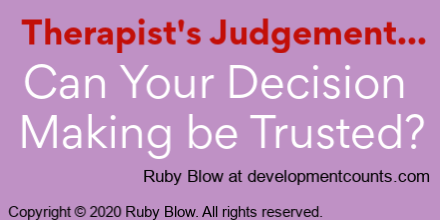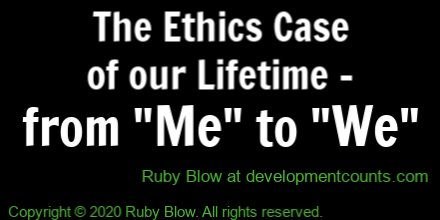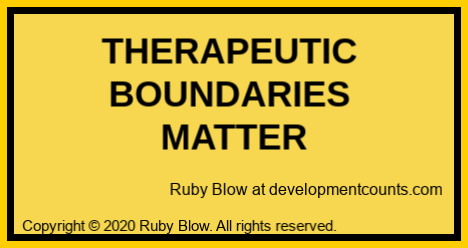But First Do No Harm
I don’t know if some have forgotten this lesson. Perhaps it is increasingly overlooked. The concept of reducing the risk for harm is still a vital component to effective therapy. Like every other type of service, the quality of what you receive is dependent upon the person providing the service. Below are three harmful practices that therapists engage in and what therapists can do or be instead.
Harmful Practice #1
Harboring judgments about clients. One of the foundational tenants of therapy is to approach clients without judgement. The truth is that being judgmental is fundamental to human behavior. It seems to be a part of our protective mechanism.
- We judge ourselves and others in an attempt to not be ashamed or embarrassed.
- We do it to influence and control the behaviors of others.
- We also do it to prove that we are part of an “acceptable” norm.
As westernized/individualistic human beings, we generally idealize being different while hoping to be universally liked.
- Being liked and accepted feels psychologically and emotionally safe.
- Being disliked, in some cases, can be particularly dangerous. Because being disliked is associated with being ostracized, maligned, alone and potentially not safe.
We judge others in order to gauge how we are doing. Therapists are supposed to “accept” people and not place value judgments on them. At the same time, therapists need to recognize the value judgments others have toward their clients. This is at the root of cultural competency.
What should therapists do about this? Practice being less judgmental in your day-to-day life. This does not mean you can’t have reactions to people, things and events. It means that you must revisit your judgments. Be open to different perspectives and ways of being. Drop the need to be right. Stop over-focusing on being personally successful in your assessments of your clients. This is often for your own edification and sense of accomplishment. Turn all focus to understanding the client’s world view. When this happens, the assessment of the client’s stated problem becomes clear. The client does not to resist because they feel known and understood. In other words: Learn more about what you are talking about before you speak.
Harmful Practice #2
Therapists who don’t recognize when they are judging. Sometimes in our attempts to determine cause and effect, therapists create false equivalencies or false narratives and present them to clients.
- People don’t come to therapy for the same type of treatment that they can find out in the world at large.
For example, if a therapist believes a client has been sexually harassed because of the way the client dresses, then the therapist holds a judgment that dressing “a certain way” can keep someone from harm.
- The truth is a person with harmful intent will identify a victim regardless of who is dressed in what way.
The belief that a victim of any form of violence is in part to blame may be okay to hold as a personal ideology…however, it is very difficult to keep that from seeping into one’s work as a therapist.
- At its worst, this belief gives people a false sense of control and responsibility for the actions of others.
- This type of judgment will likely re-open old wounds.
- It sends the signal you are only acceptable if you believe as “I” believe and behave as “I” behave.
- Essentially, to be successful in therapy, the client must become a version of the therapist and the therapist’s values.
What should therapists do about this? Therapists need to have experienced therapy or consistently be in their own therapy. Therapists who don’t recognize when they are judging lack vital self awareness. Their blind spots can put clients at risk. Personal development work that requires interactions with other people is necessary. We can’t decrease this harmful practice without experiencing genuine compassion from another human in the context of therapy or in the context of a healing relationship.
It can also be helpful to examine whether religious beliefs play a role in how you think things “should” be and next determine how this shows up in your work as a therapist. Even clients who hold the same religious affiliation of their therapist are vulnerable to harmful judgement if unchecked. This is one way to limit abuses of power based in religious or other ideology. It’s okay to have your own beliefs, it is not okay to insulate yourself so much that you can’t relate to others with differing mindsets and principles.
Harmful Practice #3
Failure to recognize, feel and reflect emotion. The gift of a truly great therapist is the ability to connect and be emotionally tuned in to their clients. Too often, therapists want to do the intellectual work but not the emotional work. This type of harmful practice can lead to compounded errors in therapy.
A common way this shows up in treatment is when a client shares a problem or concern and the therapist seeks first to alleviate the stated problem as quickly as possible.
- Sometimes therapists do this because it is what they have been taught or it their interpretation of pragmatic approaches to therapy (cognitive behavioral therapy, reality therapy or dialectical behavioral therapy).
- Another reason therapists may fail to recognize, feel and reflect emotion is because they are uncomfortable with feelings. They are afraid of being overwhelmed by clients’ feelings or they have numbed their own feelings to cope with problems in their own lives.
- Another reason that therapists may downplay the importance of feelings and emotions is because society at large has a narrative that logic and intellect should rule and dominate all paths forward. Failure to understand and attend to emotions means that you remain disconnected from the client. It is this form of detachment that keeps the therapist from “feeling” the pain a client may feel.
This whole process leaves clients feeling uneasy, misunderstood and in some cases hurt. Hurt because the therapy itself enhances their feelings of isolation. In other words, “if a therapist doesn’t get it, get me…who can?”
What should therapists do about this? Engage in and be open to consultation, supervision and feedback. It’s important to discuss how you feel in sessions with your clients. The therapists who provide this as peers or other trained professionals would ideally be non-judgmental and accepting of others themselves.
An appropriate response to a client’s expressed feelings, which may show up as their “resistance” to treatment, for example:
- not completing homework assignments from the therapist,
- or saying “yeah but,” to many of the therapist’s reflections or suggestions…
is to learn to formulate accurate empathy. Accurate empathy can almost exclusively be derived when the therapists have reduced their judgments, are aware of their existing judgments, and allow themselves to cultivate a deep understanding of the client’s worldview and experiences. When you truly come alongside a client, they will feel understood. They won’t have to protect themselves from your judgments or your disapproval. They will treat you as a welcome and invited guest in the emotional center of their mind/body because they know that you will do no harm and that how they “feel” matters just as much to you as what they “think.”
Now the real work of psychotherapy can begin.
Copyright © 2018 Ruby Blow. All rights reserved.
Share your thoughts on Linkedin, Facebook, Twitter or log in to one of your accounts below to comment. Subscribe to my YouTube channel.





